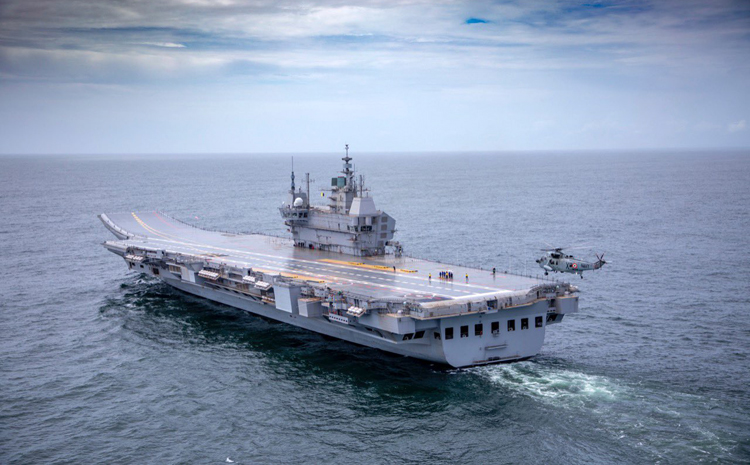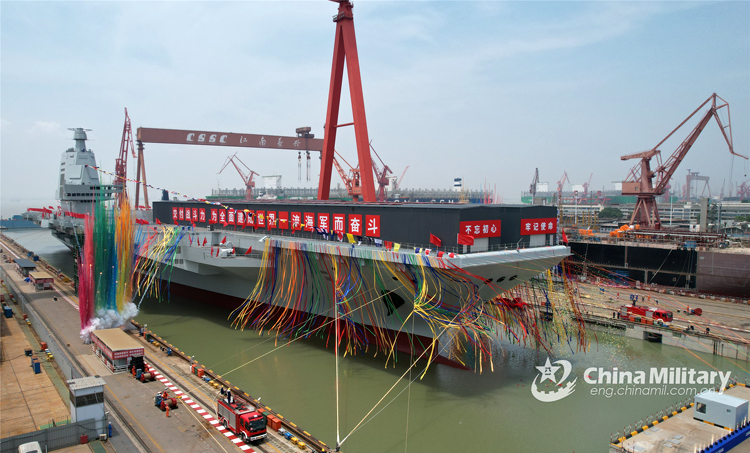INDIAN ARMED FORCES CHIEFS ON OUR RELENTLESS AND FOCUSED PUBLISHING EFFORTS

The insightful articles, inspiring narrations and analytical perspectives presented by the Editorial Team, establish an alluring connect with the reader. My compliments and best wishes to SP Guide Publications.

"Over the past 60 years, the growth of SP Guide Publications has mirrored the rising stature of Indian Navy. Its well-researched and informative magazines on Defence and Aerospace sector have served to shape an educated opinion of our military personnel, policy makers and the public alike. I wish SP's Publication team continued success, fair winds and following seas in all future endeavour!"

Since, its inception in 1964, SP Guide Publications has consistently demonstrated commitment to high-quality journalism in the aerospace and defence sectors, earning a well-deserved reputation as Asia's largest media house in this domain. I wish SP Guide Publications continued success in its pursuit of excellence.
- Operation Sindoor: Resolute yet Restrained
- India’s Operation Sindoor Sends a Clear Message to Terror and the World – ‘ZERO TOLERANCE’
- Japan and India set forth a defence cooperation consultancy framework, talks on tank and jet engines
- Terrorist Attack in Pahalgam in Kashmir: Unfolding a long surgical war against PAK
- Lt General Pratik Sharma takes over Command of Indian Army's Northern Command
India's Third Aircraft Carrier
India must take a call on the third aircraft carrier if we need to be counted as a regional power not only in the Indian Ocean Region (IOR) but also in the Indo-Pacific
 |
The Author is Former Director General of Information Systems and A Special Forces Veteran, Indian Army |

On June 17, 2022, China launched its third aircraft carrier ‘Fujian’; which is more technically advanced and the first catapult aircraft carrier wholly designed and built in China. A month earlier on May 18, China launched the world's first AI-operated drone carrier that can carry up to 50 flying, surface and submersible drones which can be launched and recovered autonomously. A Pentagon report released in May 2022 has said that China aims to build at least six aircraft carrier battle groups (CBG) by 2035. India is scheduled to launch its second aircraft carrier INS ‘Vikrant’ in August this year.
The global geostrategic dynamics have become clearer with NATO General Secretary Jens Stoltenberg announcing that NATO has been planning war on Russia since long. Moreover, NATO has declared China as a security challenge for the first time; implying the Western design is for a future clash with China similar to its ongoing clash with Russia in Ukraine. China will unlikely get cowed down but America has always banked on its prominence through wars and destabilising regions.
Indian Navy’s ‘Maritime Capabilities Perspective Plan 2022’, which includes the indigenous construction component, already caters for three aircraft carriers
The Indo-Pacific, therefore, is likely to witness sparks which may not be too distant. India needs to look at the Indian Ocean and beyond more seriously. In the event of an India-China war, we will need to fight ourselves, with the West eager to sell us arms at exorbitant prices. Same will be the case in conflict at sea – QUAD notwithstanding.
An aircraft carrier needs to be viewed in terms of a CBG as the US, China, UK see it, not singly. India must take a call on the third aircraft carrier if we need to be counted as a regional power not only in the Indian Ocean Region (IOR) but also in the Indo-Pacific. There is no denying that CBGs are best for sea control thousands of km away from own shores. China did initially invest massively in submarines but is now concentrating on CBGs because submarines are good for sea denial, not sea control. Also, submarines cannot achieve three-dimensional control over a large expanse of ocean, far from own shores.
India strategically juts into the Indian Ocean, through which two-third of world’s oil shipments, one-third of bulk cargo traffic and half the world’s container traffic transit. This translates into some 90,000 ships of world’s commercial fleet (9.84 billion tonnes) annually. India’s international trade (95 per cent by volume and 70 per cent by value) moves by sea, including large amount eastward with China, ASEAN countries and Southeastern nations. India needs to protect its coastline (7,863 km), EEZ (1.02 million sq km) and 17,000 sq km of offshore assets. India’s cargo traffic handled by ports was expected to reach 1,695 million MT by 2022, as against 643 million MT 2014-15.
China has militarised the South China Sea (SCS) and plans to build 18-19 bases in the IOR under the pretext of “Overseas Strategic Support Bases”. Chinese naval bases in Djibouti and Gwadar (Pakistan) are home to PLA marines, and China is now building its third overseas base in Cambodia
Indian Navy’s ‘Maritime Capabilities Perspective Plan 2022’, which includes the indigenous construction component, already caters for three aircraft carriers. The Science and Technology Roadmap (2015-2035) and Indian Naval Indigenisation Plan (2015-2027) would steer the efforts to synergize overall Research and Development (R&D) efforts in the maritime sector. There has already been plenty debate over the cost of the third aircraft carrier but this should be viewed in the following backdrop:
- The recent statement by NSA Ajit Doval to the media (related to the Agnipath scheme) that four years from now India will be a $5 trillion economy.
- According to the media, in total, INS ‘Vikramaditya’ cost India $10-11 billion including its overhaul costs and costs of ordnance on board.
- The cost of INS ‘Vikrant’ is assumed to be in the region of 23,000 crores.
- The estimate in circulation that India annually spends over $100 billion tax-payers money on its lawmakers and political party appointees in terms of pay, pensions, perks and security, which will keep escalating. This exorbitant expenditure needs to be at least halved but who will bell the cat?
It may be seen from the above, that India can easily afford a third aircraft carrier if the security concerns are seriously looked at even though the NSA has not been able to craft the National Security Strategy for which he was tasked to define in 2019.

China has militarised the South China Sea (SCS) and plans to build 18-19 bases in the IOR under the pretext of “Overseas Strategic Support Bases”. China has invested in 95 ports worldwide and debt-trapped Sri Lanka in handing over Hambantota port for 99 years. Chinese naval bases in Djibouti and Gwadar (Pakistan) are home to PLA marines, and China is now building its third overseas base in Cambodia.
According to a US Congressional Research and Service report released in March 2022, at least 10 Chinese Type 055 Destroyers are thought to have been launched or are under construction. Beijing has also built 17 x Type 39A/B submarines and plans to increase the number to 25 in three years, according to the US Department of Defence (DoD) report of 2021 submitted to the US Congress. A corollary to the PLA Navy is China’s maritime militia; made up of at least 122 vessels and likely as many as 174, according to the Center for Strategic and International Studies (CSIS).
The first CDS, General Bipin Rawat had accorded low priority to the Navy’s projection for a third aircraft carrier. This needs to be seriously reviewed with the enlarging threat at sea.
With regard to China’s Maritime Militia, the CSIS report says the militia has two main parts; professional militia boats and actual fishing boats employed by the Chinese military under a subsidy scheme. The vessels have automatic weapons on board and have reinforced hulls, making them very dangerous at close range. Also, they have a top speed of around 18-22 knots, making them faster than 90 per cent of the world's fishing boats. In addition to the CSIS report, there have been reports of China’s maritime militia vessels firing lasers at foreign pilots flying in the SCS.
The first CDS, General Bipin Rawat had accorded low priority to the Navy’s projection for a third aircraft carrier. This needs to be seriously reviewed with the enlarging threat at sea. Ironically, the Navy’s amphibious and mine clearance capability also remains neglected.





